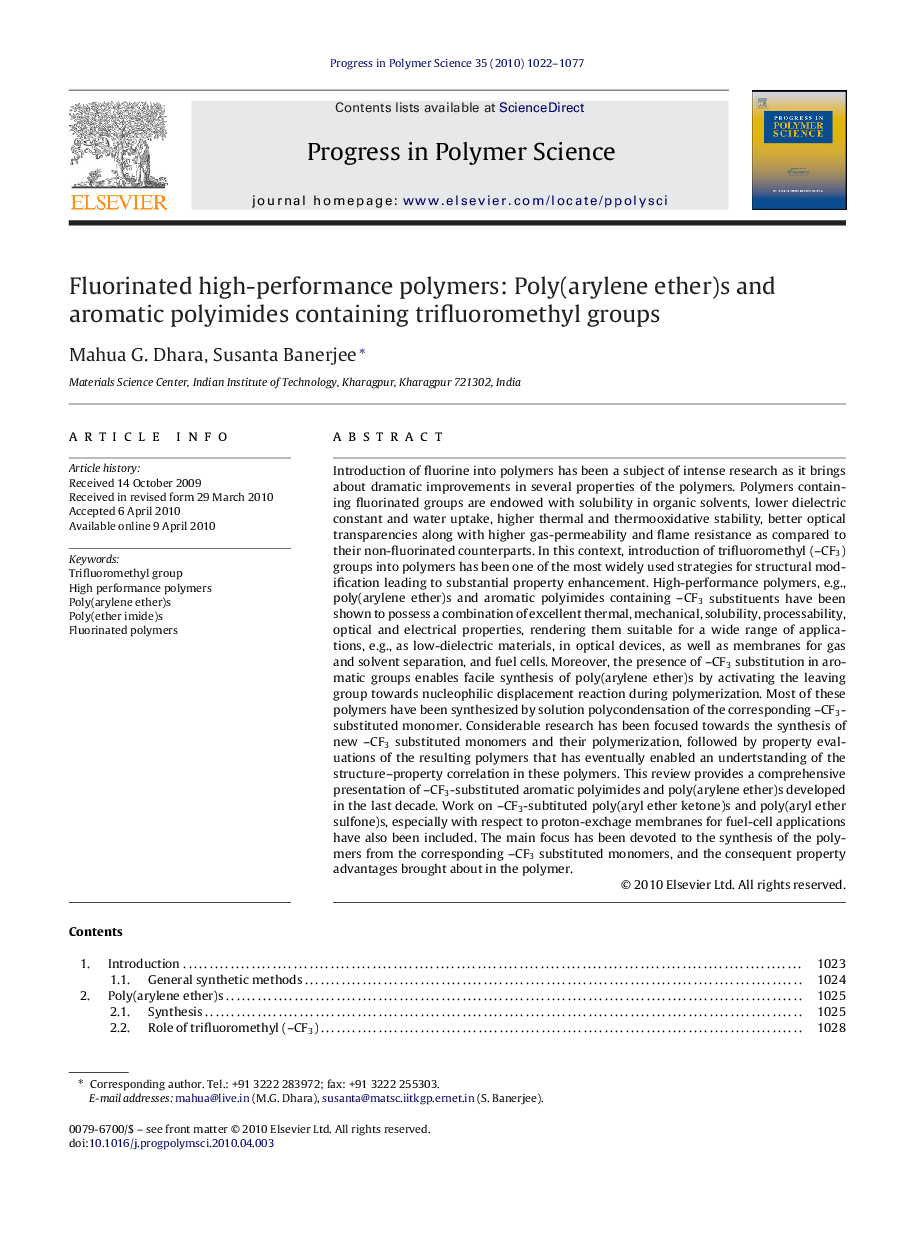| Article ID | Journal | Published Year | Pages | File Type |
|---|---|---|---|---|
| 5208641 | Progress in Polymer Science | 2010 | 56 Pages |
Introduction of fluorine into polymers has been a subject of intense research as it brings about dramatic improvements in several properties of the polymers. Polymers containing fluorinated groups are endowed with solubility in organic solvents, lower dielectric constant and water uptake, higher thermal and thermooxidative stability, better optical transparencies along with higher gas-permeability and flame resistance as compared to their non-fluorinated counterparts. In this context, introduction of trifluoromethyl (-CF3) groups into polymers has been one of the most widely used strategies for structural modification leading to substantial property enhancement. High-performance polymers, e.g., poly(arylene ether)s and aromatic polyimides containing -CF3 substituents have been shown to possess a combination of excellent thermal, mechanical, solubility, processability, optical and electrical properties, rendering them suitable for a wide range of applications, e.g., as low-dielectric materials, in optical devices, as well as membranes for gas and solvent separation, and fuel cells. Moreover, the presence of -CF3 substitution in aromatic groups enables facile synthesis of poly(arylene ether)s by activating the leaving group towards nucleophilic displacement reaction during polymerization. Most of these polymers have been synthesized by solution polycondensation of the corresponding -CF3-substituted monomer. Considerable research has been focused towards the synthesis of new -CF3 substituted monomers and their polymerization, followed by property evaluations of the resulting polymers that has eventually enabled an undertstanding of the structure-property correlation in these polymers. This review provides a comprehensive presentation of -CF3-substituted aromatic polyimides and poly(arylene ether)s developed in the last decade. Work on -CF3-subtituted poly(aryl ether ketone)s and poly(aryl ether sulfone)s, especially with respect to proton-exchage membranes for fuel-cell applications have also been included. The main focus has been devoted to the synthesis of the polymers from the corresponding -CF3 substituted monomers, and the consequent property advantages brought about in the polymer.
